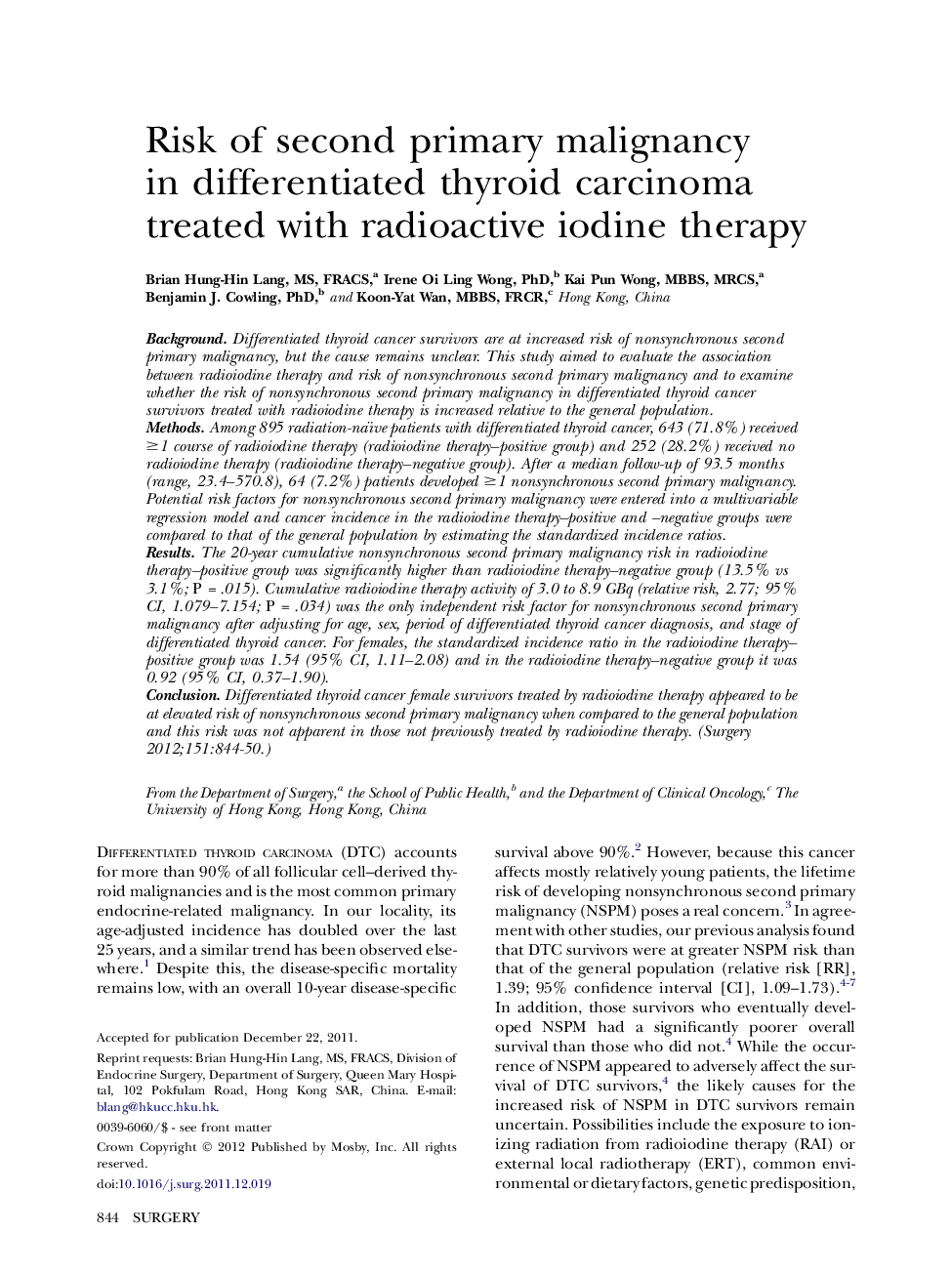| کد مقاله | کد نشریه | سال انتشار | مقاله انگلیسی | نسخه تمام متن |
|---|---|---|---|---|
| 4307801 | 1289257 | 2012 | 7 صفحه PDF | دانلود رایگان |

BackgroundDifferentiated thyroid cancer survivors are at increased risk of nonsynchronous second primary malignancy, but the cause remains unclear. This study aimed to evaluate the association between radioiodine therapy and risk of nonsynchronous second primary malignancy and to examine whether the risk of nonsynchronous second primary malignancy in differentiated thyroid cancer survivors treated with radioiodine therapy is increased relative to the general population.MethodsAmong 895 radiation-naïve patients with differentiated thyroid cancer, 643 (71.8%) received ≥1 course of radioiodine therapy (radioiodine therapy–positive group) and 252 (28.2%) received no radioiodine therapy (radioiodine therapy–negative group). After a median follow-up of 93.5 months (range, 23.4–570.8), 64 (7.2%) patients developed ≥1 nonsynchronous second primary malignancy. Potential risk factors for nonsynchronous second primary malignancy were entered into a multivariable regression model and cancer incidence in the radioiodine therapy–positive and –negative groups were compared to that of the general population by estimating the standardized incidence ratios.ResultsThe 20-year cumulative nonsynchronous second primary malignancy risk in radioiodine therapy–positive group was significantly higher than radioiodine therapy–negative group (13.5% vs 3.1%; P = .015). Cumulative radioiodine therapy activity of 3.0 to 8.9 GBq (relative risk, 2.77; 95% CI, 1.079–7.154; P = .034) was the only independent risk factor for nonsynchronous second primary malignancy after adjusting for age, sex, period of differentiated thyroid cancer diagnosis, and stage of differentiated thyroid cancer. For females, the standardized incidence ratio in the radioiodine therapy–positive group was 1.54 (95% CI, 1.11–2.08) and in the radioiodine therapy–negative group it was 0.92 (95% CI, 0.37–1.90).ConclusionDifferentiated thyroid cancer female survivors treated by radioiodine therapy appeared to be at elevated risk of nonsynchronous second primary malignancy when compared to the general population and this risk was not apparent in those not previously treated by radioiodine therapy.
Journal: Surgery - Volume 151, Issue 6, June 2012, Pages 844–850